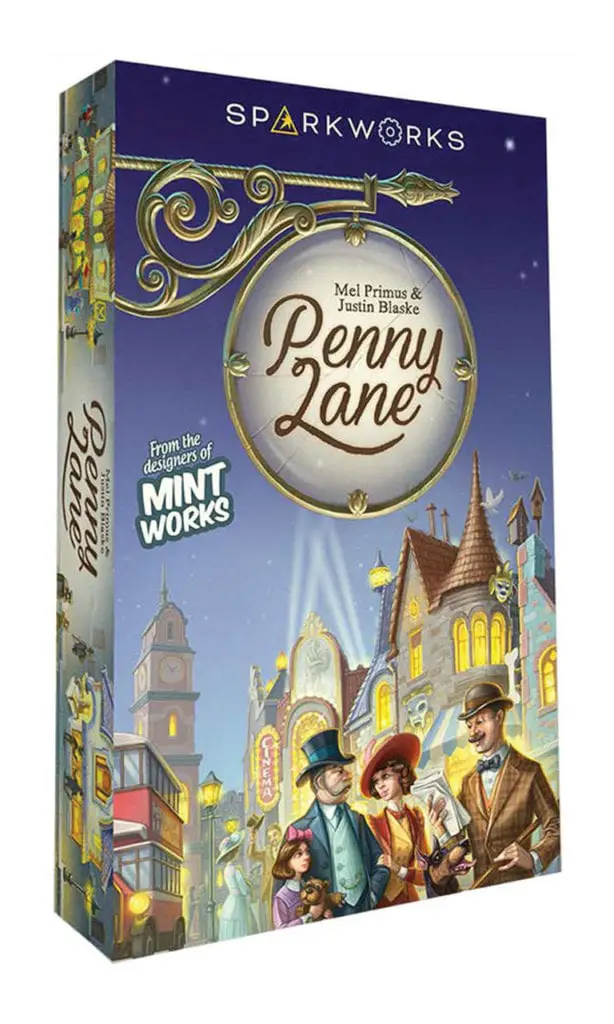
Players: 2-5
Ages: 14+
Game Time: ~30 minutes
Publisher: Sparkworks
The Overview:
You and your friends are each Mayors of your Lanes. You decide which Buildings are built on your Lane, where your meeples are employed, and how best to spend your money. The overall objective of this game is to build the best lane by spending pennies (get it? Penny Lane?) Players compete for purchasing Stores, Workshops, Attractions, and Housing. Each building card is added to your existing lane, making it worth more Stars (these are what determine who wins, so you want a lot of them). You send meeples out to complete jobs, use Pennies to buy buildings, and overall just be the best darn mayor you can.
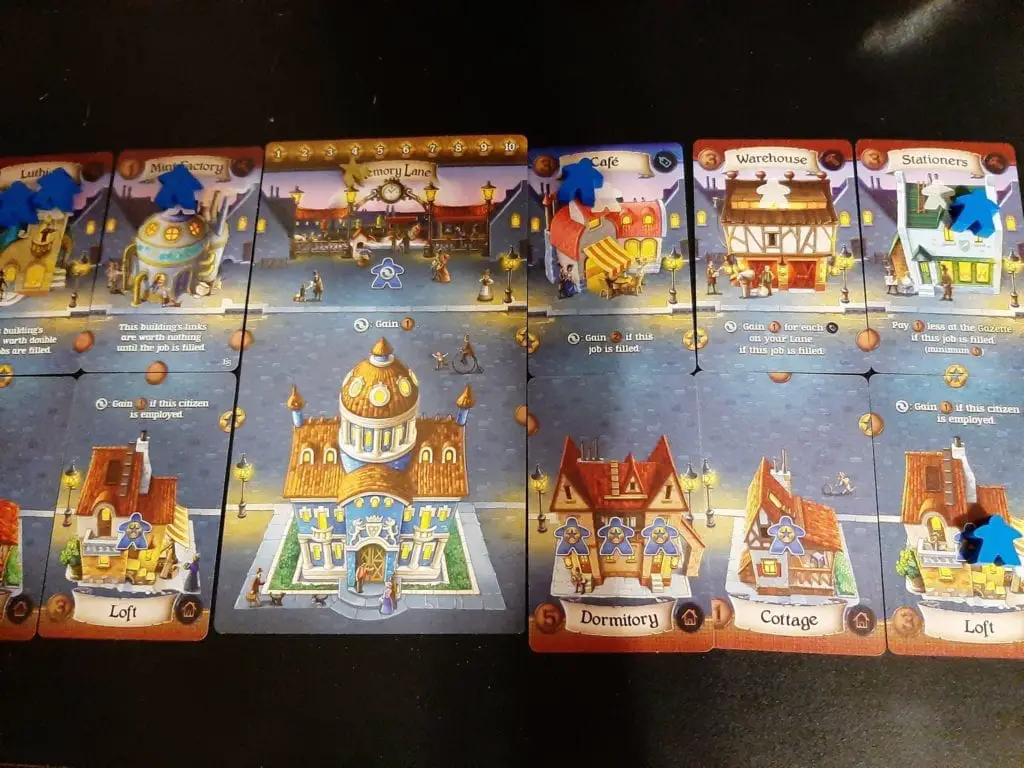
The Set-up:
Each player gets 1 Player Board (to begin their lane), a scoring Star, and 3 Pennies. The 8 Main Street cards (the ones where you can send meeples to fulfill jobs) are placed in a row—er, in a Lane. The Building Supply card deck is shuffled, and the top 5 Buildings are revealed.
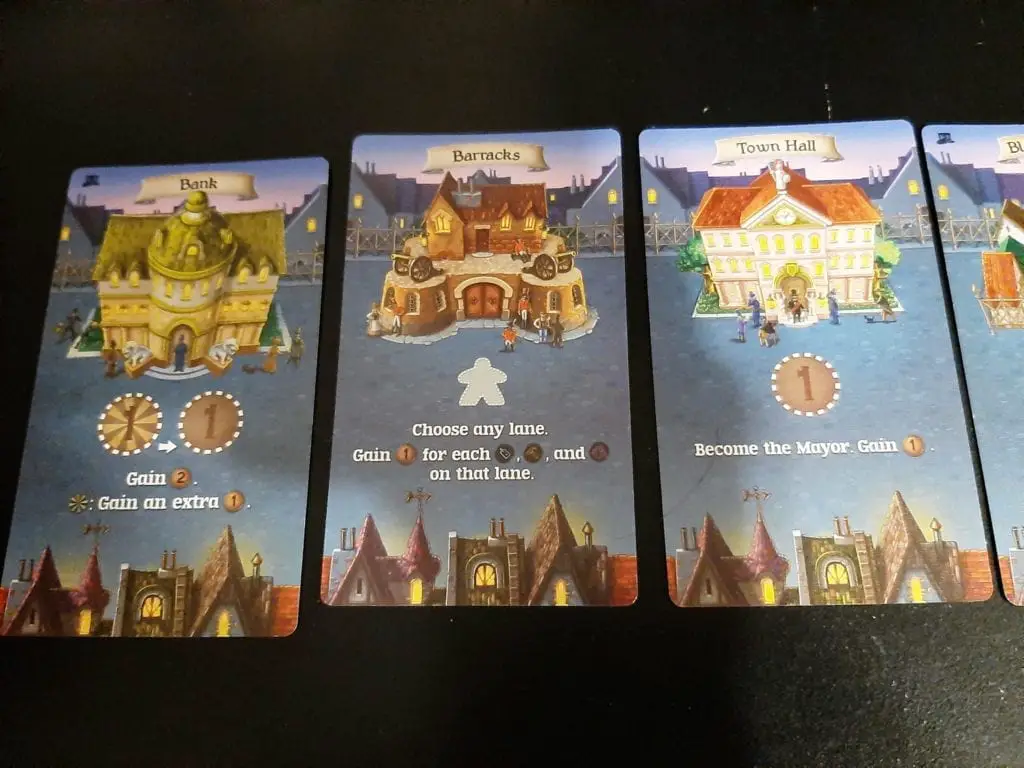
Gameplay:
Each round, the player with the Mayor meeple goes first in deciding how to improve their Lane. This can be done by purchasing Buildings, spending Pennies to swap previously built locations, sending meeples to work, and gathering Pennies based on the Lanes that have been built. Once they are finished, control passes clockwise to the next person. The round ends when nobody can do anything, or each player passes their turn.
Gameplay definitely started out slow, since a lot of the mechanics were confusing at first. Once we realized that certain cards had better bonuses if you got to them first (First person to access the Bank each round got extra Pennies, for example), the game really found its stride. Order of operations are a big deal in this game, and it just takes a couple rounds to really get comfortable with that. One of the players had the Stationers, which allowed them to pay fewer Pennies at the Gazette, which in turn allowed them to employ more of their meeples for cheaper. Domino effects are all over this game, which is both a good and a bad thing. Each player quickly found Their Thing and stuck to it.
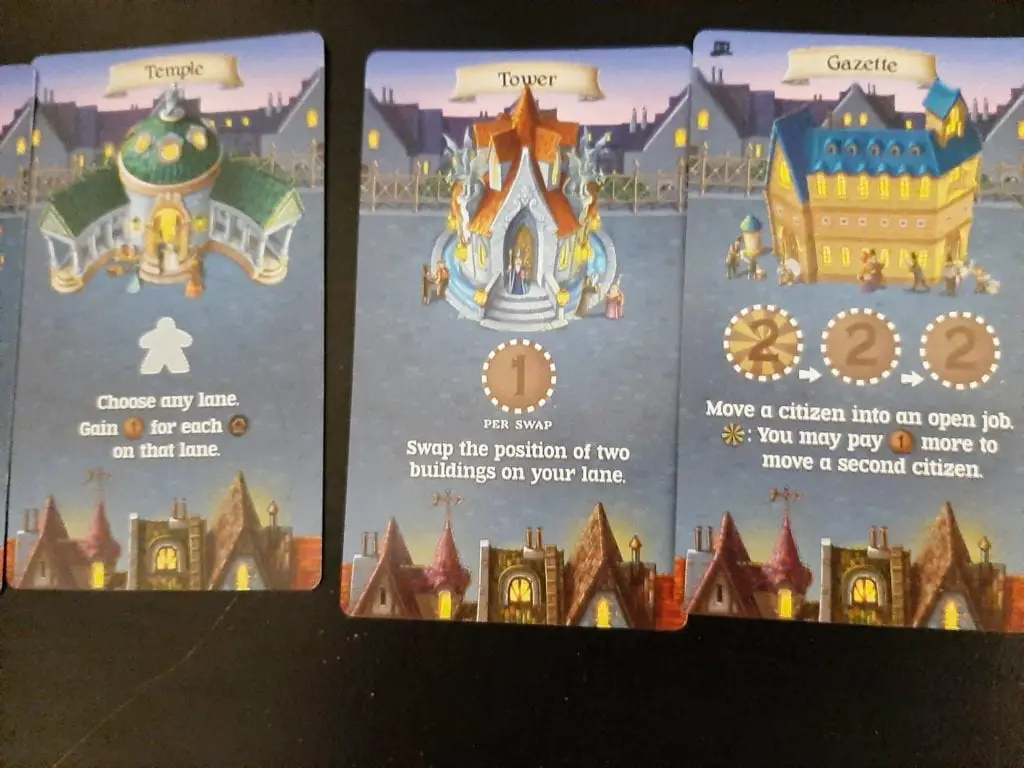
Near the beginning, I paid a Penny to Town Hall in order to become the Mayor, so that I guaranteed going first each round (this was later taken back from me, but it gave me a huge head start). This let me start the round by paying to the Bank, getting more Pennies. After this, I either bought a new Building for my Lane or I paid the Gazette to find work for my meeples. Other players put more emphasis on other locations, and the rest of the game slowly unfolded from there. You can also pay the Tower to swap Buildings on your Lane, maximizing the effects of each location. For some quick money, paying the Temple and the Barracks let you earn Pennies based off of any player’s Lane, so be thankful to your friend in first place. It was really fun to see who favored spending all of their Pennies at once on the big Buildings versus who paid 2 here and 2 there for small improvements that led to big rewards down the road—er, Lane. The winner is declared when a round ends and a player has at least 10 Stars. Any ties are dealt with by who has the most Pennies. Any ties that still remain are decided by whichever player is closest to being 42 years old.
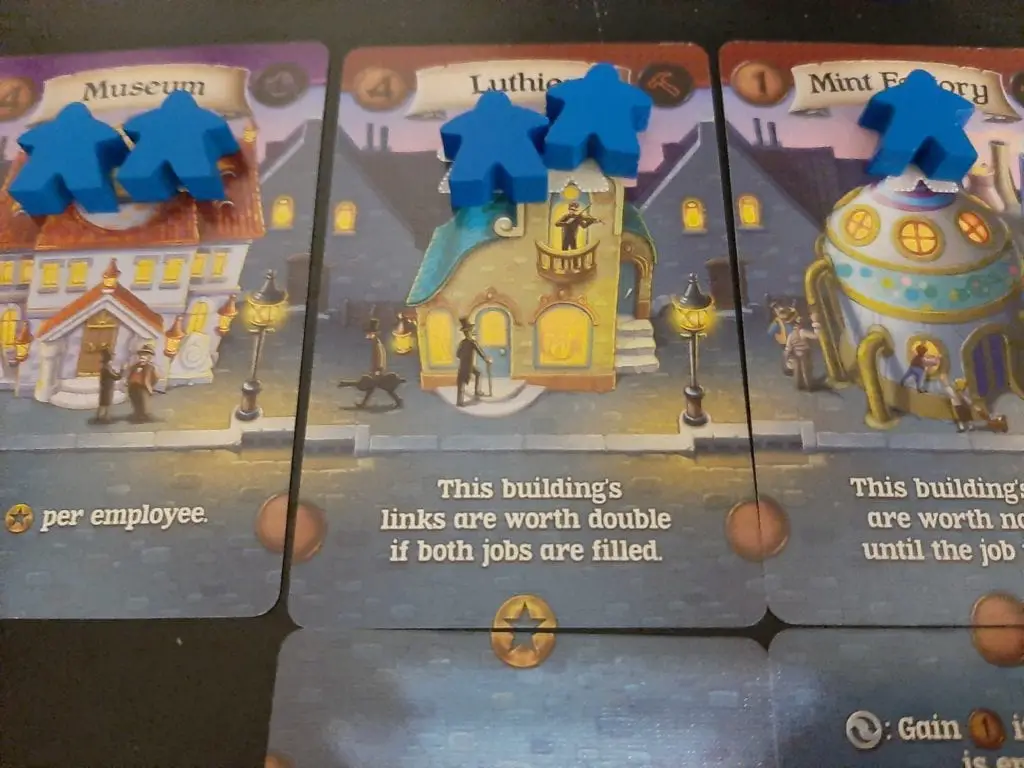
In Summary:
Once everybody started getting used to their individual Lanes and bonuses, the game definitely got got into a nice rhythm.
It was nice to feel like you had a plan of attack with the construction of your Lane; I had the Mansion which gave me more Stars for every Shop I owned. I knew that I wanted to place certain Buildings in certain locations in order to maximize the Pennies or Stars that I got. However, I felt like I ended up with sort of tunnel vision, where other players were taking their turns and I was barely paying attention. This is the main negative to how some of these Lanes ended up working. Almost like a video game, where your character uses a certain build of skills and equipment, there were a lot of parts of this game I never touched simply because I didn’t need to. I focused on getting Pennies, which let me buy many of the more expensive Buildings, which then gave me more meeples and Pennies. Rinse and repeat. Only a few times did I have to race other players to get certain rewards, which led to some intense Penny-placing! The first game I won it was with a tie, and then by a single Penny, which is honestly the most perfect way it could have gone.

Overall, this is definitely a fun game for those who enjoy resource management. It is fairly easy to slide into a quiet building routine, or to compete with your friends over who can pay the most money to the Bank (oh, how real life this game is!) or who can buy the most Buildings off the Black Market (which is definitely the sketchiest part of your Mayoral rule). There are so many Buildings in the deck that each game has definitely been different, making me value certain locations over others. As soon as I got comfortable in my Mansion, the game throws an Arcade at me. Good thing I still have that extra Penny!
[rwp_box_criteria id=”0″]
|
[rwp_box_form id=”0″] |
Thanks to Sparkworks for the chance to check the game out, and you can pick up your own copy up Amazon, where it retails for $24.00.

